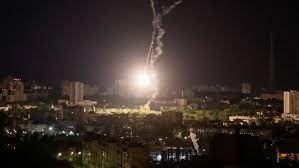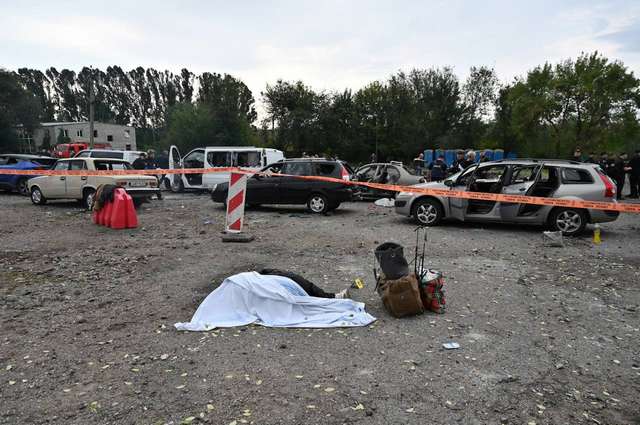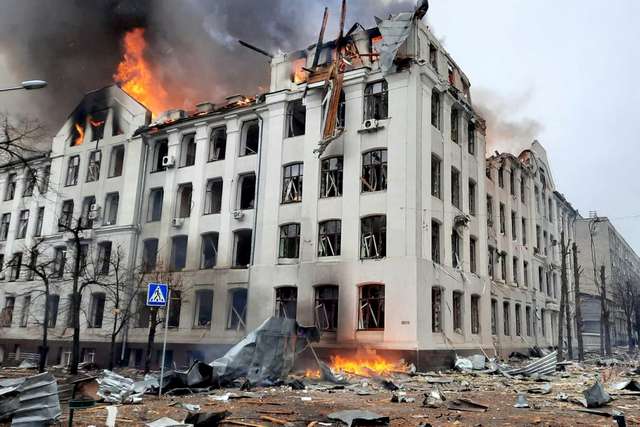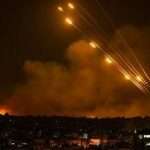
Russia launched a missile offensive on the Ukrainian capital Kyiv in the early hours of the morning (16 May) which was described as being “exceptional in density”.
Ukraine were quick to state that all 18 missiles fired at them were shot down; however, and probably predictably, Russia claimed that the attack had been a complete success and hit all of its intended targets.
With a counter-offensive from the Ukrainians expected in the coming months, Moscow has seemingly decided now is the time to step up its air campaign after a lull of over 50 days, with what many see as a strategic attempt to exhaust the air defence systems.
Among the barrage launched in this latest attack were “hypersonic missiles”, which are believed to be capable of reaching speeds of more than 11,000kmh (7,000mph).
These the Russians confidently stated, would prove impossible to be taken out by any of the world’s air defence systems, but according to reliable Ukrainian sources, six of them were intercepted, with rocket debris falling over central districts, but no injuries were reported.
President Volodymyr Zelensky has spent the past few days touring major Western European allies and securing promises of several billion dollars worth of military equipment from the likes of the UK, Germany and France.
Three hour attack
Air raid sirens blasted out over Kyiv and its surrounding regions from around 02:30 local time and continued for more than three hours. The Commander-in-Chief of Ukraine’s armed forces, Valerii Zaluzhny, confirmed that the capital was attacked from three directions – to the north, south and east and also said that the 18 missiles launched were a combination of air, sea and land-based.
These included nine Kalibr cruise missiles, which were launched from ships in the Black Sea, and three Iskander land-based missiles.
Kyiv takes out the “dagger”
The remaining six were Kinzhal Hypersonic weapons, which are much harder to defend against because of their speed – they can travel up to 10 times the speed of sound – as well as the fact they fly at low altitudes and can manoeuvre mid-flight.
However, he was delighted to report that these “unstoppable” Kinzhal’s, whose name translates to dagger, had all been intercepted and destroyed.
Russian counter claim
Russia’s defence ministry almost predictably issued a communication that claimed it had destroyed a U.S.-built Patriot surface-to-air missile defence system with a Kinzhal missile, and that the attacks had been aimed at Ukrainian fighting units and ammunition storage sites, and had all successfully hit their targets.
Rocket debris at city zoo
Residents were apparently warned to keep away from windows as debris from intercepted rockets fell indiscriminately from the sky in to central districts, including on the city’s zoo, although officials were quick to stress that no animals or indeed workers were injured.
Commander issues reassuring message
General Serhiy Naev, Commander of the Joint Forces of the Armed Forces, said: “The enemy’s mission is to sow panic and create chaos; but in the northern operational zone (including Kyiv), everything is under complete control.”
UK’s impressive list of military aid
Over the weekend President Volodymyr Zelensky has secured even more military aid from powerful allies, including the UK who have now committed a very impressive arsenal to the Ukrainians.
This includes: The Storm Shadow long-range cruise missile; 14 Challenger 2 tanks alongside around 30 self-propelled guns; “hundreds” of attack drones and air defence missiles; multiple-launch rocket systems with precision munitions; 5,000 next generation light anti-tank weapons designed to destroy targets at short range with a single shot; and at least 120 armoured vehicles.
War set for next stage
Ukraine has pretty much kept its forces on the defensive since November last year, so a counter-offensive would signal the next major phase of the war.






0 Comments